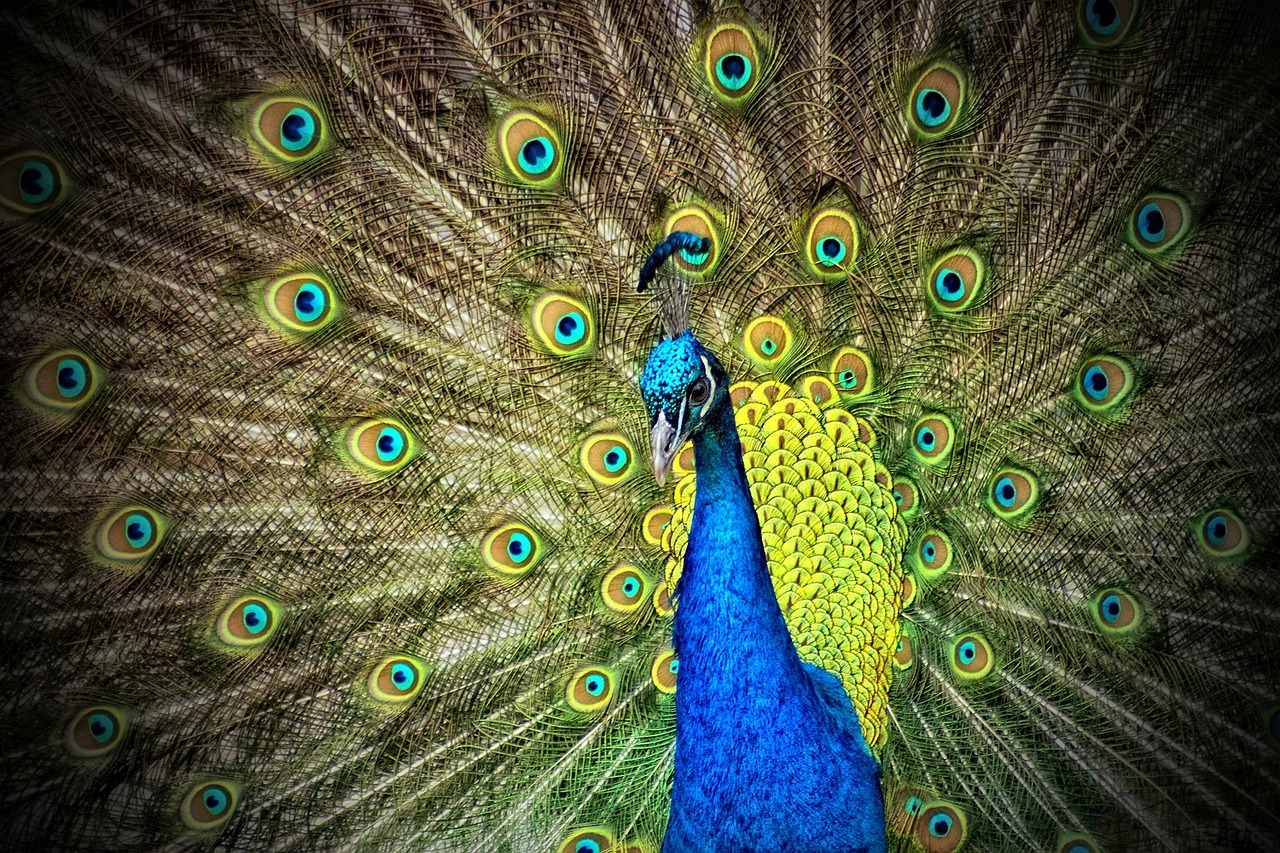“Remember that the most beautiful things in the world are the most useless; peacocks and lilies for instance.” – John Ruskin
Earlier this year, a client was touring a piece of property in Blanco County. At just over 140 acres and never inhabited beyond a few deer stands for hunting season, the land was covered in native grasses and inhabited by native songbirds and turkeys. And peacocks.
With its breathtaking fan of jewel-toned feathers, the male Indian peafowl (the peacock) is a living work of art. The peacock’s sheer beauty and inspiration for art and design, many might argue, makes it useful. But what is its purpose in the wilds of Texas? And how did this non-native, national bird of India, get here?
Non-natives gone wild
As the “I wasn’t born in Texas but I got here as fast as I could” bumper sticker reminds us, many Texas inhabitants choose the Lone Star State. Others, however, are brought here due to the choices of others – whether unintentional or intentional – that can have long-term consequences. Zebra mussels and feral hogs, for example, are the “surf and turf” poster children for non-native imports gone very wrong. Zebra mussels have infested lakes across Texas by hitching a ride on boats and trailers. Feral hogs have been on the tear thanks to early Spanish explorers over 300 years ago who brought them for sustenance. In the 1930s, “Russian boars” that were imported for sport hunting escaped Texas game ranches and began breeding with feral hogs.
An atypical non-native introduction that has not wreaked such havoc is the Ring-necked Pheasant, a native of Asia that was first introduced in the Willamette Valley of Oregon in 1881. Since then, other states, including Texas, have made proactive efforts to establish populations of this colorful game bird that is popular with hunters.
Which brings us back to that other colorful native of Asia, the peacock. How did this preening bird with its iridescent train that looks better suited to royally strutting the grounds of the Taj Mahal wind up running wild in Texas?
Feral peacock populations in Texas
While peacocks are, indeed, edible and their “watchdog” qualities have been extolled, the reason peacocks ever made their way to Texas is because they’re beautiful. That is their primary usefulness.
Central Texas has become a particularly popular wedding destination. The enticement of enchanting peacocks as part of the backdrop for your “big day” are not uncommon at wedding venues. “Your guests will love the uniqueness of Texas longhorns and peacocks roaming the ranch,” reads one venue’s description. “Following your romantic ceremony, pose for beautiful wedding pictures all around the scenic property, where peacocks, wildflower meadows, and gorgeous views provide an abundance of amazing photo opportunities,” promises another. But another venue with “peacocks on the ranch” offers, perhaps, more of a warning and a glimpse into why not all peacock populations are welcome: “Peacocks are very loud birds.”
As reported by Texas Standard, peacocks have been roaming the grounds of Mayfield Park in Austin since before it was a park. More than 80 years ago, when still a private home, “some friends gave the owners of the property a pair of peafowl for Christmas.” Today, according to the park’s website, there are “two dozen or so” resident peafowl who freely roam the area. While volunteers help care for the birds that have become a main attraction for the park, feral peacock populations across Texas engender mixed feelings. Many praise their exotic beauty and the simple thrill of seeing a peacock, some raise the notion that, although “invasive”, they probably don’t compete with native species. Others, however, complain that they “poop everywhere” and their calls sound like “screaming cats or car horns”.
According to a Houston Chronicle reporter, who tried to learn how the feral peacock populations became established in Houston, it really came down to local lore that they were introduced in 1980 by a family who owned a ten-acre property. A population of approximately 70 feral peacocks in a neighborhood in Midland, Texas, is the result of a nearby landowner populating his property with peacocks more than 50 years ago.
In short, there is no common, historic tale of the peacock’s arrival in Texas. They didn’t strut down the ramp of a Spanish galleon 300 years ago. They didn’t hitch a ride on a boat trailer. Rather, they were a Christmas gift here. A wedding venue attraction there. How the feral peacocks ended up on a ranch in Blanco County is anyone’s guess. But it was the unexpected sight of one, its feathers glistening in the sun, that was one of the highlights of the client’s property tour which ultimately led to the land’s purchase. And, after the purchase, it was a peacock’s middle of the night screams, its primary usefulness nowhere in sight, that ultimately led to this question:
How do you cook a peacock?









